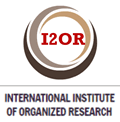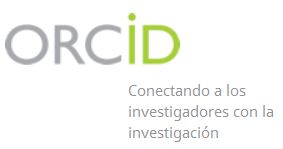Enteropathogenic bacteria associated with acute diarrheal disease in children
Keywords:
enteropathogens, dysenteryAbstract
Introduction: bacteria cause between 10% and 20% of infectious diarrheas, many do not self-limit and need specific surveillance and specific treatment against the possibility of a potentially epidemic or virulent agent to avoid dissemination and complications. Objective: to characterize isolation of enteropathogenic bacteria in children with acute diarrheal disease in the Provincial of Villa Clara in a period of ten years. Method: a retrospective descriptive study was performed. The population consisted of 20,076 faecal samples for coproculture collected from children admitted with acute diarrheal disease at “José Luis Miranda” Infant Hospital from 2006 to 2015. The sample consisted of 1 657 isolated enteropathogenic bacteria. Results: the isolated enteropathogenic bacteria were: Shigella spp. (34,22%), Salmonella spp. (23,72%), Vibrio cholerae (14,24%), enterohemorrhagic Escherichia coli (10,92%), Aeromonas spp. (8,39%), Yersinia enterocolitica (5,31%), Escherichia coli enterotoxigenic (2,60%) and Plesiomonas spp. (0,60%). Conclusions: the isolates of Shigella spp. and Salmonella spp. predominated that showed fluctuations in the studied period with marked decreases when the cholera epidemic occurred. All intestinal pathogenic bacteria showed seasonality that is repeated year after year on a regular basis with a maximum epidemic limit in plateau between the II and III trimesters to Shigella spp., II quarter for Salmonella spp., enterohemorrhagic Escherichia coli and Aeromonas spp. and I quarter for Yersinia enterocolitica.Downloads
References
1. Organización Panamericana de la Salud. Situación de salud en las Américas. Indicadores básicos [Internet]. 2005 [citado 22 Oct 2013]. Disponible en: http://www1.paho.org/spanish/dd/ais/IB-folleto-2005.pdf
2. Riveros M, Ochoa TJ. Enteropatógenos de importancia en salud pública. Rev Perú Med Exp Salud Pública [Internet]. 2015 [citado 15 Agos 2016];32(1):[aprox. 10 p.]. Disponible en: http://www.scielo.org.pe/scielo.php?script=sci_arttext&pid=S1726-46342015000100022
3. Álvarez Martínez M, Buesa Gómez J, Castillo García J, Vila Estape J. Procedimientos en Microbiología Clínica. Diagnóstico microbiológico de las infecciones gastrointestinales [Internet]. España: SEIMC; 2008 [citado 15 Agos 2016]. Disponible en: https://www.seimc.org/contenidos/documentoscientificos/procedimientosmicrobiologia/seimc-procedimientomicrobiologia30.pdf
4. Ministerio de Salud Pública. Anuario estadístico de salud 2015 [Internet]. La Habana: Dirección de Registros Médicos y Estadísticas de Salud; 2016 [citado 5 May 2016]. Disponible en: http://files.sld.cu/dne/files/2016/04/Anuario_2015_electronico-1.pdf
5. Dirección General de Epidemiología. Manual de Procedimientos Estandarizados para la Vigilancia Epidemiológica de la Enfermedad Diarreica Aguda mediante la Estrategia de Núcleos. México: Secretaría de Salud DF; 2012.
6. Judith F, Jeanne Ch, Neil H, Marsha K. Pediatric infectius diseases. 6 ed. Philadelphia: Elselvier; 2009.
7. Kotloff KL, Nataro JP, Blackwelder WC, Nasrin D, Farag TH, Panchalingam S, et al. Burden and aetiology of diarrhoeal disease in infants and young children in developing countries (the Global Enteric Multicenter Study, GEMS): a prospective, case-control study. Lancet [Internet]. 2013 [citado 15 Agos 2016]; 382(9888):209-222. Disponible en: http://www.thelancet.com/journals/lancet/article/PIIS0140-6736%2813%2960844-2/abstract?rss=yes
8. Instituto de Salud Pública. Vigilancia de laboratorio. Salmonella spp. 2009-2014. Chile, Boletin ISP [Internet]. 2014 [citado 15 Agos 2016];4(10):1-18. Disponible en: http://www.ispch.cl/sites/default/files/Boletin%20Salmonella%202009-2014%20%2823-10-2014%29%20.pdf
9. Caldorin M, Zago Castanheira de Almeida IA, Macruz Peresi JT, Cardiga Alves E. Ocorrência de Escherichia coli produtora de toxina Shiga (STEC) no Brasil e sua importância em saúde pública. BEPA [Internet]. 2013 [citado 15 Agos 2016];10(110):[aprox. 15 p.]. Disponible en: http://periodicos.ses.sp.bvs.br/scielo.php?script=sci_arttext&pid=S1806-42722013000200001&lng=pt
10. Brito Loureiro EC, Bezerra Sousa E, Vasconcelos Santos D, de Cruz Rocha C, de P aula Ramos F, Moraes Silva MC. La detección de bacterias enteropatógenas y enteroparasitarias en los pacientes con diarrea aguda en Juruti (Pará, Brasil. Rev Pan-Amaz Saude [Internet]. 2010 [citado 15 Agos 2016];1(1):[aprox. 6 p.]. Disponible en: http://scielo.iec.pa.gov.br/scielo.php?pid=S2176-62232010000100020&script=sci_arttext&tlng=es
11. Bravo L, Fernández A, Núñez FA, Rivero LA, Ramírez M, Águila A, et al. Aeromonas spp. asociada a enfermedad diarreica aguda en Cuba: estudios de casos y controles. Rev Chil Infect [Internet]. 2012 [citado 15 Agos 2016];29(1):44-48. Disponible en: http://www.scielo.cl/scielo.php?script=sci_arttext&pid=S0716-10182012000100008
12. Nzeako B, Okafor N. Bacterial enteropathogens and factors associated with seasonal episodes of gastroenteritis in Nsukka, Nigeria. Br J Biome Sci [Internet]. 2002 [citado 15 Agos 2016];59(2):76-9. Disponible en: https://www.ncbi.nlm.nih.gov/pubmed/12113407
13. Ledo Ginarte Y, Bravo Fariñas L. ¿Es Yersinia enterocolitica un importante enteropatógeno en Cuba? Rev Cubana Med Trop [Internet]. 2012 [citado 15 Agos 2016];64(3):[aprox. 3 p.]. Disponible en: http://scielo.sld.cu/scielo.php?script=sci_arttext&pid=S0375-07602012000300015
14. Bustos González A. Diarreas bacterianas. Rev Enferm Infecc Pediatr [Internet]. 2012 [citado 19 Abr 2016];25.26(100):149-153. Disponible en: http://www.medigraphic.com/pdfs/revenfinfped/eip-2012/eip122i.pdf
15. Gadea I, Soriano F. Yersinia enterocolitica. Aspectos prácticos. Boletín de Control de Calidad. 1999;11(2):5-9.
How to Cite
Issue
Section
License
Authors who have publications with this journal agree to the following terms:
- Authors will retain their copyright and assign to the journal the right of first publication of their work, which will simultaneously be subject to a Creative Commons License / Attribution-Noncommercial 4.0 International (CC BY-NC 4.0) that allows third parties to share the work as long as its author and first publication in this journal are indicated.
- Authors may adopt other non-exclusive license agreements for distribution of the published version of the work (e.g., depositing it in an institutional repository or publishing it in a monographic volume) as long as the initial publication in this journal is indicated.
- Authors are allowed and encouraged to disseminate their work through the Internet (e.g., in institutional telematic archives or on their web page) before and during the submission process, which can produce interesting exchanges and increase citations of the published work. (See The effect of open access).





 december 1 2025
december 1 2025


